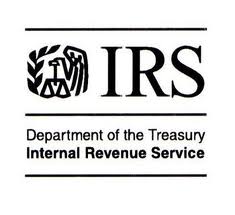Key Person Life Insurance – Key man Insurance


Key Person insurance, also known as keyman insurance, key man insurance & business insurance, is a standard life insurance policy purchased by a business to compensate the business for the losses sustained from the sudden unexpected death of a key person.
Anyone whose sudden death would threaten the continuity or survival of the business can be a key person.
- An owner or Director, especially if the loss affects the short or long term viability of the business such as adversely affecting the company’s standing with creditors or the company’s ability to secure financing.
- Executives responsible for the strategic direction and management of the company.
- A top salesperson responsible for a sizable percent of the revenue and income of the business.
- A scientist or engineer who developed the company’s intellectual property would most definitely be considered a candidate for key-man insurance.
It is prudent to protect the time, effort and money invested in your business from the sudden unexpected death of the key people in your business. Their unique abilities and contributions are often difficult and costly replace.
The policy does not indemnify actual losses, but pays a fixed death benefit to the Beneficiary of the Policy (The business). The key person is the insured; the Business is the owner and the beneficiary. The Business pays the insurance premiums.
Taxation
Employer Owned Life Insurance (EOLI) is also known as Company Owned Life Insurance (COLI).
The Business cannot deduct the insurance premiums for income tax purposes.
The death benefits are income tax-free to the business if the transaction is properly structured prior to the policy being issued and certain conditions have been followed prior to death. If the purchase was not properly structured and/or the conditions were not followed, then the death benefit in excess of the premiums paid, will be taxed as ordinary income to the business.
How can employers plan for favorable tax treatment of a death benefit?
Before obtaining the policy, the board of directors must authorize the purchase and record it in the board minutes, and the employee to be covered must be notified in writing and give written consent and acknowledge that the employer is the sole beneficiary of all death benefit proceeds. It is very important that this be done before the policy is issued. If written notice and consent are given after the policy is issued, the death benefit of the life insurance policy will be taxable. To satisfy the notification requirements, the insurance industry has created a standard IRS-approved form: ‘Notice and Acknowledgement of Consent to Life Insurance’ that can be provided to the employee at the time of the application for key man Company Owned Life Insurance (COLI). In addition, other IRS conditions and restrictions may apply.
If you fail to meet IRS guidelines, this will limit the amount of death proceeds the company as beneficiary can receive income tax free. For Company Owned Life Insurance (COLI) issued after August 17, 2006, the company only can exclude from income the amount not exceeding the total of premiums and other amounts paid on the policy up to that point. Any excess death benefits received over those amounts must be reported, and taxed, as gross income.
In addition, the IRS requires that a company file Form 8925 (Report of Employer-Owned Life Insurance Contracts). This form requires information including the number of employees at year end, the number of employees who are under a COLI arrangement, the total amount of insurance in force and a sworn statement certifying that employee consent and acknowledgement were properly obtained.
Source: Phil Ruggeri, Cetera investment executive, First State Bank 7/01/2012 http://www.sbnonline.com/article/how-to-utilize-key-man-life-insurance-and-protect-your-business-firststate/
IRS Notice and consent requirements
Effective for life insurance contracts issued after August 17, 2006
Definition: The law defines “employer-owned life insurance” broadly. It includes any policy if:
- The owner engages in a trade or business, and
- The owner (or a related party) is a beneficiary (direct or indirect), and
- The insured is an employee at the time of policy issue, a
- The insured is a U.S. citizen or resident.
The notice and consent requirements…are met if, before the issuance of the contract:
- The employee is notified in writing that the applicable policyholder intends to insure the employee’s life and the maximum face amount for which the employee could be insured at the time the contract was issued,
- The employee provides written consent to being insured under the contract and that such coverage may continue after the insured terminates employment, and
- The employee is informed in writing that an applicable policyholder will be a beneficiary of any proceeds payable upon the death of the employee.
The insurance industry has created a standard IRS-approved form: ‘Notice and Acknowledgement of Consent to Life Insurance’ that can be provided to the employee at the time of the application for key man Company Owned Life Insurance (COLI).
Annual Reporting Requirements
In addition, form 8925 must be included with the employer’s annual income tax return. The following information is required:
- The number of employees at the end of the year.
- The number of employees who are insured at the end of the year under employer-owned life insurance contracts.
- The total amount of life insurance in force at the end of the year under these contracts.
- The name, address, and taxpayer identification number of the employer and the type of business in which the employer is engaged.
- Whether the employer has a valid consent for each insured employee, and if not, the number of insured employees for whom a consent was not obtained
Both the Notice and Consent and at least one of the four safe harbors specified in the new law must be in place to keep the death benefit income tax free.
Four Safe Harbors:
The form deals only with the Notice and Consent requirement. Both the Notice and Consent and at least one of the four safe harbors specified in the new law must be in place to keep the death benefit income tax free.
Safe Harbor 1: Key Person (The insured) is a key person at policy issue. This safe harbor (unlike the others) provides certainly at the time the policy is issued that the death benefit will continue to be income tax free. The employer must keep good records. Possibly many years from now, when the employee dies, the employer may have to prove that the employee satisfied the key person rules when the policy was issued. A key person for these purposes is someone who, at policy issue:
- Was a director of the employer.
- Was a 5% or greater owner in the year before policy issue.
- Received compensation of for policies issued in 2015, employee earned in excess of $115,000 in 2014; for policies issued in 2016, and employee earned in excess of $120,000 in 2015 (adjusted for inflation).
- Was one of the five highest paid Officers.
- Was among the 35% highest paid employees.
You cannot know if the remaining safe harbors are available until the employee dies. Until then, the employer won’t know for sure if the death benefit is taxable or not taxable.
Safe Harbor 2: Current Employee The insured was an employee any time in the 12-month period before death.
Safe Harbor 3: Death Benefit Paid to the Insured’s Heirs
- A member of the insured’s family (spouse, parents and grandparents, children and grandchildren, brothers and sisters).
- An individual the insured named (other than the employer).
- A trust set up for anyone in those first two groups of people.
- The insured’s estate.
Although this may avoid income tax on the death benefit, it does create a split dollar arrangement. If the employer owns the policy and the person named as beneficiary is any of these people, the arrangement is, by definition, split dollar. The employee will be taxed on the economic benefit provided by the policy.
Safe Harbor 4: Buy-Sell Funds Death benefits remain income tax free if used to buy the insured’s interest in the employer (equity, capital or profits) from someone listed in Safe Harbor 3.
Failure to Comply – Options to Correct
If the business did not comply with these rules, what are the options to ensure that the death benefit would not be taxable?
Going back to the insurance carrier to get the policy reissued is one cure. You can try cancelling the original policy and issuing a new one. But if the employee has had health issues in the interim, they may not be insurable any more.
Apply to IRS for Private Letter Ruling
“Applying to the Internal Revenue Service for a private letter ruling is another option. In a recent private letter ruling, PLR 201207017, the IRS ruled that an employer satisfied the notice and consent requirements although there was no separate form because the totality of other documents– “considering all of Taxpayer’s documentation as a whole”— covered all the bases. One downside of a PLR is the expense: $18,000 just for the filing fee.”
Source Forbes June 4, 2012 article by Ashlea Ebeling Small Businesses Face Little Known Life Insurance Tax Trap
How much Key person insurance do you need?
Impact of Sudden Loss
Lenders (SBA loans) and angel investors often require life insurance to protect its commitment and investment in the Company.
What does it take to service debt and continue operating until a replacement is found, hired & trained?
Consider the Replacement Costs and the Contributions to Earnings
The impact of a sudden lost of a key person and the impact on current and future revenues, earnings, ongoing competiveness and the Company’s ability to continue to service debt service. If the key person is contributing half the profits, how will you service debt?
What would it take to remain competitive in your industry?
Loss of a key engineer or scientist could negatively impact the future competitiveness and intellectual property of the Company. What would it take to replace such a person? Salary, stock options, moving & training costs, employment agency fee?
The loss of a top sales person on revenues & profits could impact the whole enterprise, result in layoffs, lost business to competitors and lost shareholder value. How fast can you find and replace the lost talent and at what costs? How long will you have to service debt before a replacement is found and is up to speed?
Underwriters typically allow 5 to 7 times salary, bonus and percentage share of profits if the key person is an owner. For example, using a 5 multiple, a key person earning $200,000 would allow a $1,000,000 policy. Each case has its merits. A higher or lower multiple may be justified. Some Key people are more valuable to the Company and harder to replace.
In addition to income of the key person, the underwriter will want to know why the key person is valuable enough to the business enterprise to be considered a key person. They will consider the role the person plays in the business, their experience and special skill or knowledge they possess.
If indemnifying a business loan, the underwriter will want to know the history of the business, the reason for the loan, loan terms, loan collateral and financial statements of the business.
If the key person insurance is funding a Buy-Sell Agreements, the underwriter will need to know ownership percentages, copies of the Agreements, Company valuation (or formula) and Company Financial Statements.
The insurance company needs the above information to accurately assess facts and financial risk of issuing the policy, in order to make the best insurance offer.
What if the key person leaves?
You can continue to pay the premiums. You can stop paying the premiums. You can sell the policy to a life settlement company if the insured approves the transfer. The life settlement company will pay you a fraction of the death benefit upfront. It takes over the policy and continues to pay the premiums, and collects the death benefit when the insured dies. It may also exercise conversion options and convert a term policy into a whole life or universal life policy. You can also transfer ownership of the policy to the insured, and let them decide what to do with the policy.
Rewarding and retaining key employees. Life insurance can be used to fund key executive compensation strategies, executive bonus plans, supplemental executive retirement plans and deferred compensation



